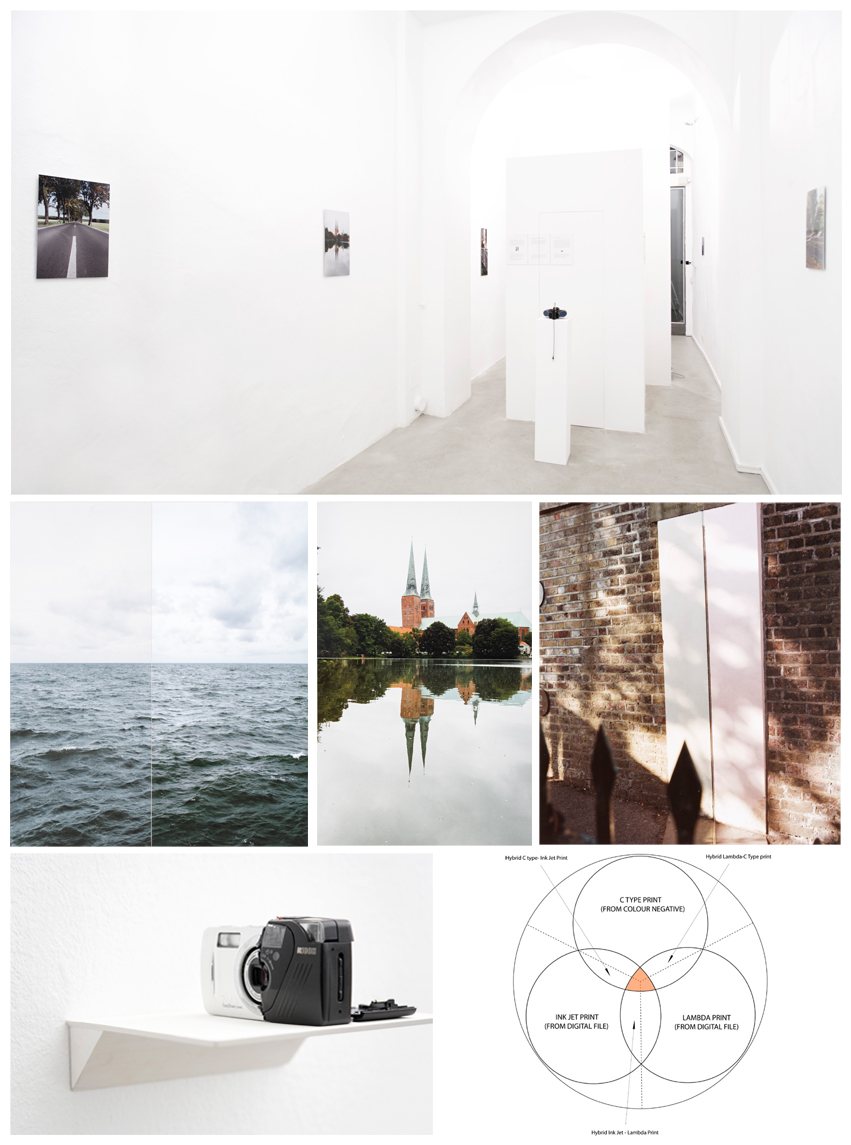
Steven Pippin
ANALOGITAL
November 7, 2008 to January 17, 2009
Linienstraße 160, 10115 Berlin
The concept behind the photographs in Analogital was initially triggered by the inception of digital photography back in the late 1980’s and arguments which arose between the benefits of either analogue or digital photography and which might be the better or more truthful medium and whether this discussion really mattered at all. My initial aim was to simply create a photograph which utilised both mediums separately, photographing one subject and then splicing together the two prints along a natural axis or flaw in the picture such as a horizon line or in the case of Figure 1 above through the 0 degree longitude meridian line.
Concurrent with this meeting of the two mediums within the single technique of photography exist points in space such as the meeting between the sea and the sky or qthe urban cosmopolitan boundary as it abrupts with nature. Berlin has a similar and for all intents and purposes far more radical meeting point of east and west [Communism v. Capitalism] defined along the boundary of the Berlin wall. This metaphor then has led to a more complex idea and one that I now intend to pursue which is a collision point not only of analogue versus digital, east meeting west, reality exposing imitation, philosophical presiding over conceptual or aesthetic ideals but also the infinite situated within the local, that is to say a point within a picture, if such a place can or does exist, where all of these phenomena come together, perhaps momentarily, creating a multi dimensional faceted portal, entirely encompassed within a simple rudimentary photograph.
C Type photographic print made using a canon 35mm AE1 film camera with colour negative 100 asa Fuji film and a colour ink jet print made with a Samsung digital 5 megapixel camera and SD card both photographed the same subject at precisely the same moment. The two different mediums were then put through their relevant separate developing processes and re-assembled using the 0 degree Longitude meridian line in Greenwich as the meeting point for the two opposing media (Figure 1).
The diagram in figure 2 schemes a conceptual photograph utilising digital ink jet, traditional C type and lambda print that hereby intersects with a thee diemnsonal object, where the relevant elements of the differing print types correspond to the nature of the subject in the photograph. The central element will comprise all the possible photographic printing formats.
Particles inter-acting at a distance:
A decision needed to be made regarding which side of the photograph the digital or analogue print should be dependant on the viewpoint, subject and certain philosophical or conceptual criteria informing the specific object photographed. In the case of the meridian line, it seemed to make sense to represent West which is normally regarded as more affluent to be analogue (traditional, conservative and regarded now as being more snobbish). The east which is often regarded as poorer should be digital,(lower quality, cheaper and far more commonplace) One or two of the photographs rise above this superficial and argumentative decision (which of course is dependant on your position) on (east/west[analogue/digital]) criteria and reach a much higher and more interesting speculation concerning particle physics. The image of the ocean (Figure 3) brings together the two formats in a singular grand unified image which was made with an older type of digital camera having a small delay before the shutter was released. This image was the only picture from approximately 300 photos in which the ocean waves of both the analogue and the digital version aligned perfectly giving one single synchronised image.
It is within this photo that a metaphor for a wave and particle duality come together without the need to split the formats to align them with a particular topic regarding being on one side or the other. The photograph ‘Pure Hybrid’ is another example where the split of one against the other has become irrelevant and the match of the two separate images is so close that a perfect unity is virtually obtained. Again the centre point for this photograph is the east/west division in Greenwich park (along the cobbled brick line which traverse’s the tarmac road) a line which is of course also arbitrary in its position but which has now become a recognised world standard in global positioning systems.
8002 NIPPIP NEVETS rM
Please contact us for further information.
photos: Nick Ash
[ …more… ]
